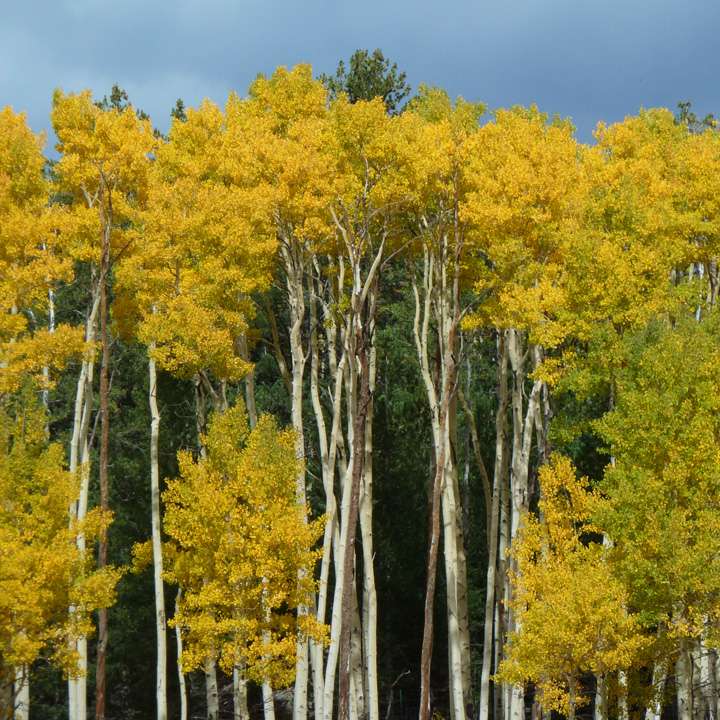- Home
- Search
- Images
- Datasets
- Sample Use
- How to Cite
- Additional Information
- About NEON
- NEON Data Portal
- ASU Biocollections
- About Symbiota
|
Family: Salicaceae |
Trees, usually heterophyllous, usually clonal, clones formed by root shoots; branching usually monopodial [or sympodial]. Stems not spinose. Buds 3-10-scaled (resinous or not, terminal buds present [or absent]). Leaves deciduous; stipules present (caducous, usually minute, sometimes prominent on sucker shoots); petiole not glandular; (blade usually less than twice as long as wide, venation ± palmate, basal secondary veins strong, paired, except in Populus angustifolia, margins subentire or crenate, basilaminar glands 0-6). Inflorescences axillary or terminal, catkins, pendulous, sessile, unbranched, (leafless, flowering before leaves emerge); floral bract caducous, apex deeply or shallowly cut, (sometimes ciliate, usually glabrous, except pubescent abaxially in P. heterophylla); pistillate bract deciduous after flowering. Pedicels present. Flowers: perianth modified into non-nectariferous disc, (persistent, caducous in P. heterophylla), cup- or saucer-shaped; stamens 6-60(-70); filaments distinct; ovary 2-4-carpellate; ovules (1 or) 2-25 per ovary; styles distinct; stigmas 2-4, cylindrical to platelike, often rolled or convoluted, entire or 2-lobed. Fruits capsular, (2-4-valved, ovoid or spherical). Seeds: aril present. x = 19. Flowering in early spring is short-lived in poplars, with abscission of staminate catkins and pistillate floral bracts, and shrivelling of stigmas all occurring before emergence of the leaves, much as in precocious Salix species (in which bracts are not caducous). During anthesis, some winter characters involving twig colors and textures, leaf scars, and features of buds generally remain intact, so such features are used as supplementary characters in the key to flowering specimens. Characters of flower buds can also be helpful in winter identification but they are absent or obscured with emergence of the inflorescences at anthesis and are omitted from this key. The key includes characters of both staminate and pistillate individuals, which generally do not occur together on a single specimen. The characters of those rare individuals with mixed catkins or hermaphroditic flowers may be anomalous in other ways as well, and such individuals may not be readily identifiable. Populus has six well-marked sections, of which four occur in the flora area: swamp poplars [sect. Leucoides Spach (P. heterophylla)]; balsam poplars [sect. Tacamahaca Spach (P. angustifolia, P. balsamifera, and P. trichocarpa)]; cottonwoods [sect. Aigeiros Duby (P. deltoides and P. fremontii)]; and aspens [sect. Populus (P. grandidentata and P. tremuloides)]. Species within a section usually have separate distributions and hybridize freely where they come in contact. Species of different sections often have overlapping ranges and do not hybridize, except that members of sect. Aigeiros hybridize with all species of both sect. Leucoides and sect. Tacamahaca with which they are sympatric (J. E. Eckenwalder 1984). All known natural hybrids in the flora area are discussed under their parent species. Although some were originally described as species, they are not self-perpetuating. Because they can persist for decades by clonal growth, they can often be found in the absence of one or both parents. All poplars are capable of clonal expansion, producing new trees from sprouts of root systems (soboliferous habit). Different species vary greatly in their propensity for cloning. The cottonwoods, Populus deltoides and P. fremontii, rarely produce root-borne shoots under natural conditions, with most clonal suckers arising from buried branches (S. B. Rood et al. 1994); PLANT: Trees, sometimes forming groves by clonal root sprouts. WINTER BUDS: of several scales, often resinous. LEAVES: usually ovate to triangular-ovate or circular, but lanceolate in P. angustifolia; margins variously crenate-serrate; stipules minute, caducous. CATKINS: borne before leaf emergence on twigs of previous year, pendulous; bracts erose, caducous. FLOWERS: with a cup- or saucer-shaped, non-nectariferous disk; stamens 6-80; stigmas more than 2 mm long, usually flat, but often rolled or convoluted. x = 19. NOTES: 20-30 spp., from the Arctic Circle s to Chis., Mex., e Africa, n India, s China; often grown for ornament, shelterbelts, timber, pulp, and specialty wood products. REFERENCES: Eckenwalder, James E. 1992. Salicaceae. Ariz.-Nev. Acad. Sci. 26(1)2. Catkins drooping, appearing before the lvs, their scales toothed, lobed, fimbriate, or densely ciliate; each fl set on a cupulate, commonly oblique disk that may be homologous with the "glands" of Salix fls; stamens 5-80, on short filaments; styles 2-4-valved, trees or tall shrubs with soft, light wood, mostly ovate to deltoid, deciduous lvs, scaly, often viscid winter-buds, and elongate catkins that mature before the lvs are fully expanded in the spring. 40, widespread. Gleason, Henry A. & Cronquist, Arthur J. 1991. Manual of vascular plants of northeastern United States and adjacent Canada. lxxv + 910 pp. ©The New York Botanical Garden. All rights reserved. Used by permission. |


